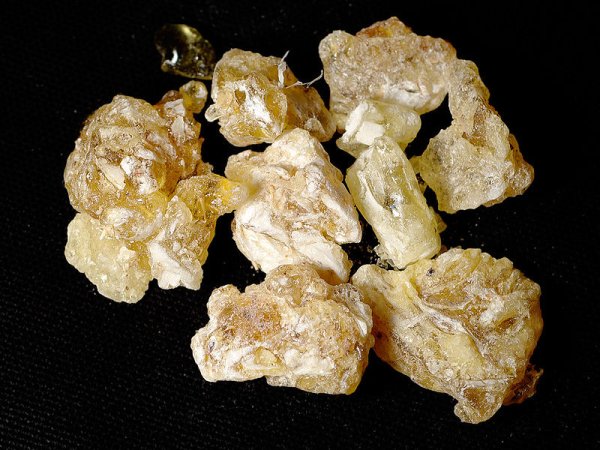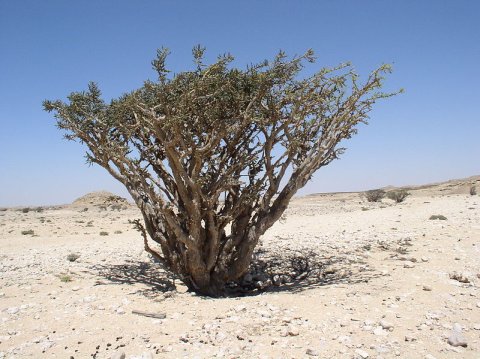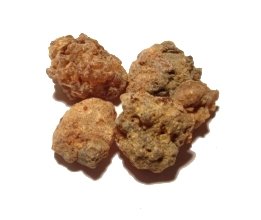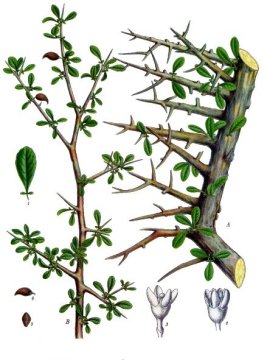Back in December when I wrote about amber, I learned about other tree resins important to humans. Two of them are celebrated tomorrow on the traditional anniversary of the visit of the Magi who brought gold, frankincense and myrrh to the infant Jesus.
Frankincense, native to the Arabian peninsula and the Horn of Africa, is a hardened resin used in religious ceremonies around the world. It’s been traded for at least 5,000 years, burned as incense or steamed to release its essential oils.
The resin is produced by slashing the bark of trees in the Boswellia genus as often as two to three times a year. Some say that Boswellia sacra produces the best. Ironically frankincense trees are declining because agricultural pressure is clearing the land and the remaining trees can’t produce viable seeds if they’re slashed too often.
Myrrh is the resin of thorny trees in the Commiphora genus, valued for its religious and medicinal uses. Just like frankincense it’s produced by slashing the tree’s bark to make it ooze sap.
Commiphora myrrha is one of the species favored for myrrh and because it is native to Yemen, Somalia, Eritrea, and eastern Ethiopia Biblical scholars say that the wise man who gave that gift came from one of those countries.
Tomorrow these two resins will be in the limelight, though frankincense and myrrh are used throughout the year.
(photos from Wikimedia Commons. Click on the images to see the originals)



